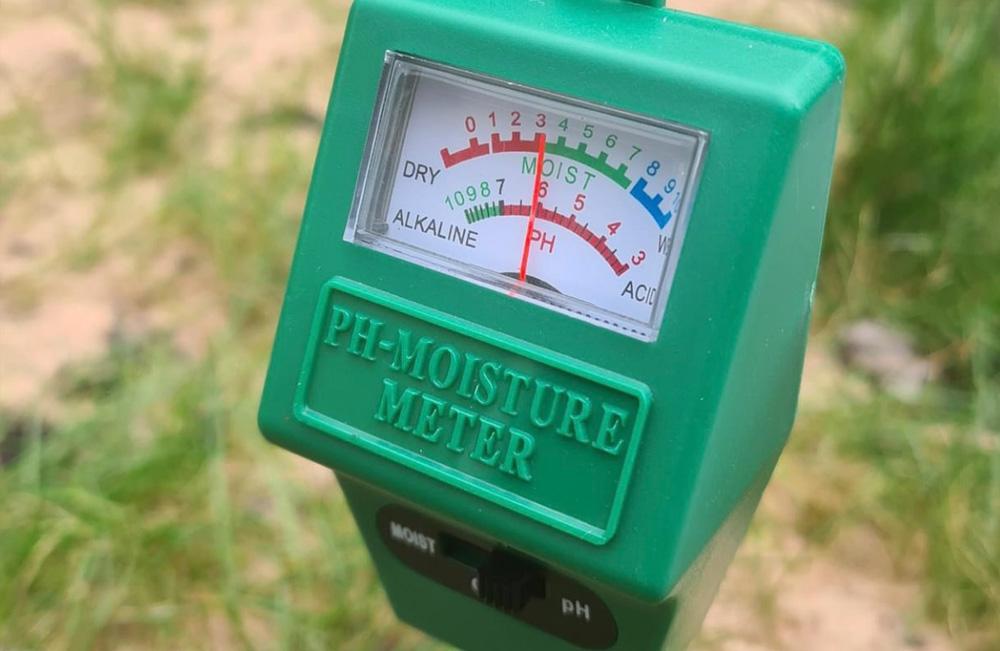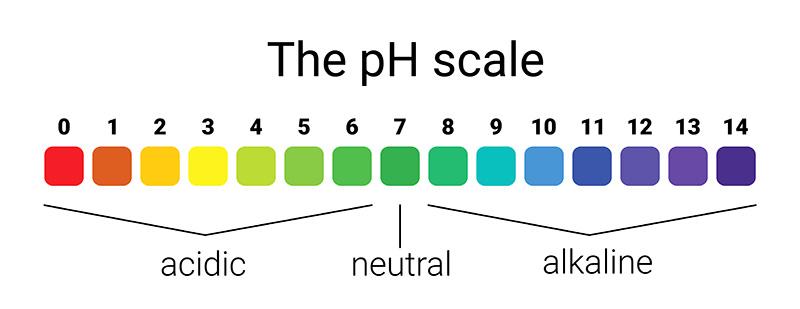
Created By
Matt Adams
Updated On
- March 1, 2024
Get FREE Exclusive Access
Keep your lawn pristine with exclusive tips, offers and insights that I only share with my private subscribers.
Latest Posts
Soil pH – Why it’s Important to test & How it Affects Plants
- By Matt Adams
- March 1, 2024
Jump to
Get FREE Exclusive Access
Keep your lawn pristine with exclusive tips, offers and insights that I only share with my private subscribers.
Soil pH is arguably the most important factor when it comes to whether your plants thrive or not. If you get a new plant. The first thing you should do is find out whether it prefers neutral, acidic or alkaline soil.
So, in this article I’m explaining why soil pH is important and how to test it to make sure you get the best pH for your soil and plants. I’ll also give you ways to modify it for best results and give you a few plants which like specific types of soils.
Firstly, what the heck is the pH scale and why does it matter to soil?
Simply put, the pH scale is a grading from 1 to 14 which tells you the acidity or alkalinity of any material – including soil.
This means your soil will have a pH level somewhere between these 2 numbers and you’ll need to use testing kit to find out what yours is.
It’s especially important to know what the pH a plant likes when you put them in your garden. Mainly so you can modify it where necessary.
Regular (every 6 weeks) testing goes a long way to succeeding with better flower blooms, as well as bigger fruit and veg crops. It’s also important to know if any feeds you use will raise or lower the acidity.
How can pH be affected?
There are 2 ways pH occurs, modified by you or naturally occurring. Most soils will have a naturally occurring pH and this is because of the rock it was formed from. So, no matter how much you try to amend it, it’ll always go back to it’s natural pH after a certain amount of time.
Meaning you essentially have 2 options…
- You could just leave it and use plants that are naturally suited to the natural pH of your soil. Of course, you’ll need to test it first to find out what the actual pH of the soil is.
- You can adapt the pH using modification feeds, such as lime for more alkilinity or ericaceous products for more acidity (more on this below)
I prefer to choose my plants based on position (sun/shade) or protection from wind. I also don’t want to be restricted to very specific types of plants. So, for me, it’s best to make sure the soil is always at the right pH level. If that requires a bit of modification, then so be it.
How to test pH of your Soil
There are many ways to test. They’re easily accessible too. So there’s no reason not to do it.
Of course, you can send your soil to a lab to get it tested for all kinds of different nutrients, including phosphorous or potassium. Though, that’s not always necessary if you just need to know the acidity or alkaline levels.
The easiest way is to buy a cheap tester from the garden centre. These come in the form of a metal probes that goes into the soil and gauge at the top or a universal testing solution that you mix with the soil in the bottle.
Testing kits are readily available both online and from your garden centres. So, here’s an overview of what you could use and why they work well.
Using a Universal Testing Kit
This one consists of a few parts and is a little more complicated to test with. That said, I think it offers the most guaranteed accuracy out of the ones available to the domestic homeowner. That’s because it’s impossible to know whether the others are actually working or not.
When you buy one of these, you’ll get a bottle of universal testing solution, a bottle of Barium sulphate powder and a spare test tube for your analysis.
How to use it step-by-step:
- Remove the top 3 inches of soil and put to the side
- Break up the soil down to approximately 12 cm (5 inches)
- Place some of the lowest level soil in a container, remove all stones and debris
- Leave to dry naturally
- Add 1ml of the soil to empty test tube
- Add one small scoop of Barium Sulphate (white powder)
- Add the pH test solution to the mix up to 2.5ml
- Put the cap back on and shake the test tube and shake
- Leave to settle for 10 minutes
- Compare the colour against the chart below to determine your soils pH

Testing with a pH Sensor rod and reader
This is a metal probe that you stick into the soil and is supposed to give you a reading on the screen attached. It’s a cheap and cheerful way of getting a reading. You can also get ones that show you the moisture levels.
However, for the pH reader to work, you need to water the soil. So, this would mean the moisture reader is almost inaccurate.
You also can’t guarantee the levels as much as you can with actually seeing the colour of the chemical reaction between the solution and the soil.
Don’t get me wrong, I’ve used these in the past and do have a couple in my shed but if my plants are struggling in specific soils, I would test it more accurately with a real testing solution.
How to use a pH reader with electrode probe properly
- Remove the top 5cm of soil
- Moisten the soil a bit of water
- Rinse the end of the electrode in water to be sure it’s not contaminated
- Push the electrode into the soil with gentle pressure. Making sure not to damage the electrode probe
- Wait for the reading to settle (usually after a few seconds)
- Note down the number that the dial settles on
- Check the number against the pH Scale to find out what the acidity or alkalinity is (some actually show which side is acid vs which side is alkaline).
The biggest problem I’ve had with this testing method is usually low accuracy and damaging the probes. That said, I’m probably not the most light-handed gardener.
How to adjust the pH of your soil quickly
There are loads of ways you can change the soil to be more acidic or less acidic. Of course, the first thing to do is find out whether the plant in that area prefers a certain type of soil or whether it just thrives in alkaline soils.
Introduce Lime to make the soil more alkaline
Lime is a popular product used in and around UK gardens. It’s an alkaline product and will therefore increase the pH making it more alkaline. It’s important to read the manufacturer or retailer’s instructions before using it. You should find out how much to use per m2 to increase how many points on the pH scale.
Introduce ericaceous compost to make the soil more acidic
Ericaceous compost is widely available at many different garden centres in the UK and online. You can simply top up the soil around the base of acid-loving plants and dig it in to the top few inches of old soil. Over time this will help to make the soil by the roots of the plants more acidic.
Remember to keep an eye on the acidic levels in case you need more or actually need to halt your applications.
Other ways of modifying soil pH
Many different products you add to your soil can and will highly likely modify the pH over time. There are some products that will change it but not necessarily work immediately. This includes things like baking soda, which could be perfect for more sensitive plants where you don’t want a huge change quickly.
